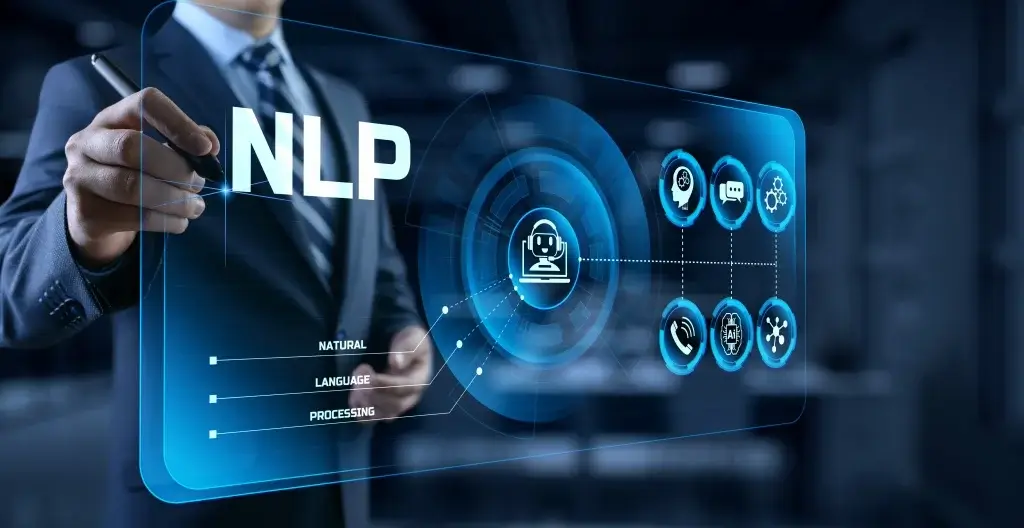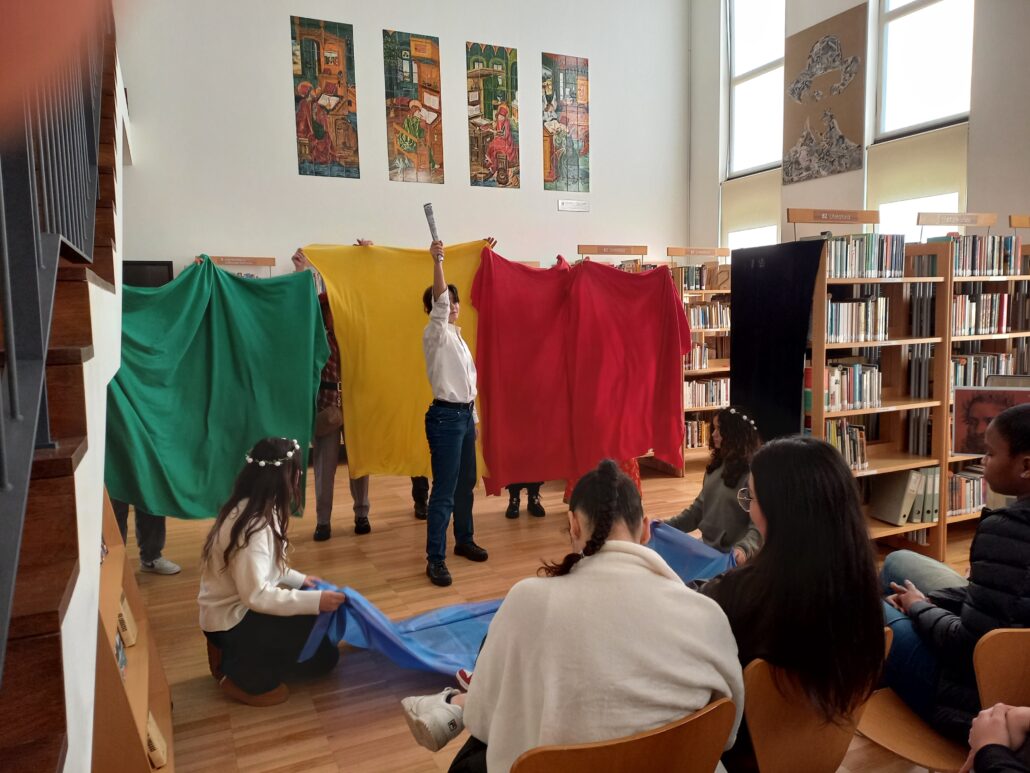AI Image Recognition: The Essential Technology of Computer Vision

Additionally, Pillow is a user-friendly and versatile library for image processing in Python that supports many formats and operations. Lastly, Albumentations is a fast and flexible library for image augmentation in Python that supports a wide range of transformations and integrates with popular frameworks such as PyTorch and TensorFlow. These algorithms process the image and extract features, such as edges, textures, and shapes, which are then used to identify the object or feature. Image recognition technology is used in a variety of applications, such as self-driving cars, security systems, and image search engines. These powerful engines are capable of analyzing just a couple of photos to recognize a person (or even a pet).
Everyone has heard about terms such as image recognition, image recognition and computer vision. However, the first attempts to build such systems date back to the middle of the last century when the foundations for the high-tech applications we know today ai image identification were laid. Subsequently, we will go deeper into which concrete business cases are now within reach with the current technology. And finally, we take a look at how image recognition use cases can be built within the Trendskout AI software platform.
Imagga bills itself as an all-in-one image recognition solution for developers and businesses looking to add image recognition to their own applications. It’s used by over 30,000 startups, developers, and students across 82 countries. Image Recognition is natural for humans, but now even computers can achieve good performance to help you automatically perform tasks that require computer vision. It can assist in detecting abnormalities in medical scans such as MRIs and X-rays, even when they are in their earliest stages. It also helps healthcare professionals identify and track patterns in tumors or other anomalies in medical images, leading to more accurate diagnoses and treatment planning. For example, to apply augmented reality, or AR, a machine must first understand all of the objects in a scene, both in terms of what they are and where they are in relation to each other.
In image recognition, the use of Convolutional Neural Networks (CNN) is also called Deep Image Recognition. However, engineering such pipelines requires deep expertise in image processing and computer vision, a lot of development time and testing, with manual parameter tweaking. In general, traditional computer vision and pixel-based image recognition systems are very limited when it comes to scalability or the ability to re-use them in varying scenarios/locations. To overcome these obstacles and allow machines to make better decisions, Li decided to build an improved dataset. Just three years later, Imagenet consisted of more than 3 million images, all carefully labelled and segmented into more than 5,000 categories. This was just the beginning and grew into a huge boost for the entire image & object recognition world.
What’s the Difference Between Image Classification & Object Detection?
Another popular application is the inspection during the packing of various parts where the machine performs the check to assess whether each part is present. Image recognition is used in security systems for surveillance and monitoring purposes. It can detect and track objects, people or suspicious activity in real-time, enhancing security measures in public spaces, corporate buildings and airports in an effort to prevent incidents from happening. Thanks to image recognition and detection, it gets easier to identify criminals or victims, and even weapons.
A key moment in this evolution occurred in 2006 when Fei-Fei Li (then Princeton Alumni, today Professor of Computer Science at Stanford) decided to found Imagenet. At the time, Li was struggling with a number of obstacles in her machine learning research, including the problem of overfitting. Overfitting refers to a model in which anomalies are learned from a limited data set. The danger here is that the model may remember noise instead of the relevant features. However, because image recognition systems can only recognise patterns based on what has already been seen and trained, this can result in unreliable performance for currently unknown data. The opposite principle, underfitting, causes an over-generalisation and fails to distinguish correct patterns between data.
The conventional computer vision approach to image recognition is a sequence (computer vision pipeline) of image filtering, image segmentation, feature extraction, and rule-based classification. On the other hand, image recognition is the task of identifying the objects of interest within an image and recognizing which category or class they belong to. Crops can be monitored for their general condition and by, for example, mapping which insects are found on crops and in what concentration. More and more use is also being made of drone or even satellite images that chart large areas of crops.

AI-based image recognition can be used to detect fraud in various fields such as finance, insurance, retail, and government. For example, it can be used to detect fraudulent credit card transactions by analyzing images of the card and the signature, or to detect fraudulent insurance claims by analyzing images of the damage. With that in mind, AI image recognition works by utilizing artificial intelligence-based algorithms to interpret the patterns of these pixels, thereby recognizing the image.
Production Quality Control
You don’t need to be a rocket scientist to use the Our App to create machine learning models. Define tasks to predict categories or tags, upload data to the system and click a button. Image-based plant identification has seen rapid development and is already used in research and nature management use cases. A recent research paper analyzed the identification accuracy of image identification to determine plant family, growth forms, lifeforms, and regional frequency. The tool performs image search recognition using the photo of a plant with image-matching software to query the results against an online database. A custom model for image recognition is an ML model that has been specifically designed for a specific image recognition task.
It provides a way to avoid integration hassles, saves the costs of multiple tools, and is highly extensible. For this purpose, the object detection algorithm uses a confidence metric and multiple bounding boxes within each grid box. However, it does not go into the complexities of multiple aspect ratios or feature maps, and thus, while this produces results faster, they may be somewhat less accurate than SSD. To understand how image recognition works, it’s important to first define digital images. One of the recent advances they have come up with is image recognition to better serve their customer.
Our professional workforce is ready to start your data labeling project in 48 hours. When somebody is filing a complaint about the robbery and is asking for compensation from the insurance company. The latter regularly asks the victims to provide video footage or surveillance images to prove the felony did happen. Sometimes, the guilty individual gets sued and can face charges thanks to facial recognition. Treating patients can be challenging, sometimes a tiny element might be missed during an exam, leading medical staff to deliver the wrong treatment. To prevent this from happening, the Healthcare system started to analyze imagery that is acquired during treatment.
Image recognition is a branch of artificial intelligence (AI) that enables computers to identify and classify objects in images or videos. It has many applications, such as face recognition, medical diagnosis, self-driving cars, and security. To train an AI model for image recognition, you need to use reliable tools that can help you with data collection, preprocessing, model building, training, and evaluation. In this article, we will introduce some of the most popular and effective tools for each stage of the image recognition pipeline. AI image recognition technology uses AI-fuelled algorithms to recognize human faces, objects, letters, vehicles, animals, and other information often found in images and videos. AI’s ability to read, learn, and process large volumes of image data allows it to interpret the image’s pixel patterns to identify what’s in it.
Detect vehicles or other identifiable objects and calculate free parking spaces or predict fires. We know the ins and outs of various technologies that can use all or part of automation to help you improve your business. Explore our guide about the best applications of Computer Vision in Agriculture and Smart Farming. In the end, a composite result of all these layers is collectively taken into account when determining if a match has been found.
From the intricacies of human and machine image interpretation to the foundational processes like training, to the various powerful algorithms, we’ve explored the heart of recognition technology. The Segment Anything Model (SAM) is a foundation model developed by Meta AI Research. It is a promptable segmentation system that can segment any object in an image, even if it has never seen that object before. SAM is trained on a massive dataset of 11 million images and 1.1 billion masks, and it can generalize to new objects and images without any additional training. It has been shown to be able to identify objects in images, even if they are partially occluded or have been distorted. YOLO is a groundbreaking object detection algorithm that emphasizes speed and efficiency.

Machines only recognize categories of objects that we have programmed into them. If a machine is programmed to recognize one category of images, it will not be able to recognize anything else outside of the program. The machine will only be able to specify whether the objects present in a set of images correspond to the category or not.
As described above, the technology behind image recognition applications has evolved tremendously since the 1960s. You can foun additiona information about ai customer service and artificial intelligence and NLP. Today, deep learning algorithms and convolutional neural networks (convnets) are used for these types of applications. In this way, as an AI company, we make the technology accessible to a wider audience such as business users and analysts. The AI Trend Skout software also makes it possible to set up every step of the process, from labelling to training the model to controlling external systems such as robotics, within a single platform. In the case of image recognition, neural networks are fed with as many pre-labelled images as possible in order to “teach” them how to recognize similar images.
VGGNet has more convolution blocks than AlexNet, making it “deeper”, and it comes in 16 and 19 layer varieties, referred to as VGG16 and VGG19, respectively. Multiclass models typically output a confidence score for each possible class, describing the probability that the image belongs to that class. It’s there when you unlock a phone with your face or when you look for the photos of your pet in Google Photos. It can be big in life-saving applications like self-driving cars and diagnostic healthcare.
The key idea behind convolution is that the network can learn to identify a specific feature, such as an edge or texture, in an image by repeatedly applying a set of filters to the image. These filters are small matrices https://chat.openai.com/ that are designed to detect specific patterns in the image, such as horizontal or vertical edges. The feature map is then passed to “pooling layers”, which summarize the presence of features in the feature map.
By combining AI applications, not only can the current state be mapped but this data can also be used to predict future failures or breakages. Lawrence Roberts is referred to as the real founder of image recognition or computer vision applications as we know them today. In his 1963 doctoral thesis entitled “Machine perception of three-dimensional solids”Lawrence describes the process of deriving 3D information about objects from 2D photographs. The initial intention of the program he developed was to convert 2D photographs into line drawings. These line drawings would then be used to build 3D representations, leaving out the non-visible lines.
The Inception architecture solves this problem by introducing a block of layers that approximates these dense connections with more sparse, computationally-efficient calculations. Inception networks were able to achieve comparable accuracy to VGG using only one tenth the number of parameters. Now that we know a bit about what image recognition is, the distinctions between different types of image recognition, and what it can be used for, let’s explore in more depth how it actually works. Image recognition is one of the most foundational and widely-applicable computer vision tasks. Image recognition is a broad and wide-ranging computer vision task that’s related to the more general problem of pattern recognition.
Faster RCNN’s two-stage approach improves both speed and accuracy in object detection, making it a popular choice for tasks requiring precise object localization. Recurrent Neural Networks (RNNs) are a type of neural network designed for sequential data analysis. Chat PG They possess internal memory, allowing them to process sequences and capture temporal dependencies. In computer vision, RNNs find applications in tasks like image captioning, where context from previous words is crucial for generating meaningful descriptions.
But it also can be small and funny, like in that notorious photo recognition app that lets you identify wines by taking a picture of the label. Hopefully, my run-through of the best AI image recognition software helped give you a better idea of your options. Hive is a cloud-based AI solution that aims to search, understand, classify, and detect web content and content within custom databases. You’re in the right place if you’re looking for a quick round-up of the best AI image recognition software. Viso provides the most complete and flexible AI vision platform, with a “build once – deploy anywhere” approach.
Dive into model-in-the-loop, active learning, and implement automation strategies in your own projects. Imagga’s Auto-tagging API is used to automatically tag all photos from the Unsplash website. Providing relevant tags for the photo content is one of the most important and challenging tasks for every photography site offering huge amount of image content. We hope the above overview was helpful in understanding the basics of image recognition and how it can be used in the real world. Similarly, apps like Aipoly and Seeing AI employ AI-powered image recognition tools that help users find common objects, translate text into speech, describe scenes, and more.
A Data Set Is Gathered
The current methodology does concentrate on recognizing objects, leaving out the complexities introduced by cluttered images. Optical Character Recognition (OCR) is the process of converting scanned images of text or handwriting into machine-readable text. AI-based OCR algorithms use machine learning to enable the recognition of characters and words in images. AI-based image recognition is the essential computer vision technology that can be both the building block of a bigger project (e.g., when paired with object tracking or instant segmentation) or a stand-alone task. As the popularity and use case base for image recognition grows, we would like to tell you more about this technology, how AI image recognition works, and how it can be used in business. It aims to offer more than just the manual inspection of images and videos by automating video and image analysis with its scalable technology.

Thanks to this competition, there was another major breakthrough in the field in 2012. A team from the University of Toronto came up with Alexnet (named after Alex Krizhevsky, the scientist who pulled the project), which used a convolutional neural network architecture. In the first year of the competition, the overall error rate of the participants was at least 25%. With Alexnet, the first team to use deep learning, they managed to reduce the error rate to 15.3%. This problem persists, in part, because we have no guidance on the absolute difficulty of an image or dataset.
Image recognition also promotes brand recognition as the models learn to identify logos. A single photo allows searching without typing, which seems to be an increasingly growing trend. Detecting text is yet another side to this beautiful technology, as it opens up quite a few opportunities (thanks to expertly handled NLP services) for those who look into the future. In a nutshell, it’s an automated way of processing image-related information without needing human input. For example, access control to buildings, detecting intrusion, monitoring road conditions, interpreting medical images, etc. With so many use cases, it’s no wonder multiple industries are adopting AI recognition software, including fintech, healthcare, security, and education.
In the area of Computer Vision, terms such as Segmentation, Classification, Recognition, and Object Detection are often used interchangeably, and the different tasks overlap. While this is mostly unproblematic, things get confusing if your workflow requires you to perform a particular task specifically. Viso Suite is the all-in-one solution for teams to build, deliver, scale computer vision applications. “It’s visibility into a really granular set of data that you would otherwise not have access to,” Wrona said. Contrarily to APIs, Edge AI is a solution that involves confidentiality regarding the images.
- In current computer vision research, Vision Transformers (ViT) have recently been used for Image Recognition tasks and have shown promising results.
- To see just how small you can make these networks with good results, check out this post on creating a tiny image recognition model for mobile devices.
- For example, with the AI image recognition algorithm developed by the online retailer Boohoo, you can snap a photo of an object you like and then find a similar object on their site.
- Imagga Technologies is a pioneer and a global innovator in the image recognition as a service space.
- Face analysis involves gender detection, emotion estimation, age estimation, etc.
- It is a well-known fact that the bulk of human work and time resources are spent on assigning tags and labels to the data.
All-in-one Computer Vision Platform for businesses to build, deploy and scale real-world applications. Results indicate high AI recognition accuracy, where 79.6% of the 542 species in about 1500 photos were correctly identified, while the plant family was correctly identified for 95% of the species. YOLO stands for You Only Look Once, and true to its name, the algorithm processes a frame only once using a fixed grid size and then determines whether a grid box contains an image or not.
Klarna Launches AI-Powered Image Recognition Tool – Investopedia
Klarna Launches AI-Powered Image Recognition Tool.
Posted: Wed, 11 Oct 2023 07:00:00 GMT [source]
An example is face detection, where algorithms aim to find face patterns in images (see the example below). When we strictly deal with detection, we do not care whether the detected objects are significant in any way. The goal of image detection is only to distinguish one object from another to determine how many distinct entities are present within the picture.
Though accurate, VGG networks are very large and require huge amounts of compute and memory due to their many densely connected layers. Of course, this isn’t an exhaustive list, but it includes some of the primary ways in which image recognition is shaping our future. On top of that, Hive can generate images from prompts and offers turnkey solutions for various organizations, including dating apps, online communities, online marketplaces, and NFT platforms. Anyline is best for larger businesses and institutions that need AI-powered recognition software embedded into their mobile devices. Specifically those working in the automotive, energy and utilities, retail, law enforcement, and logistics and supply chain sectors.
Google Photos already employs this functionality, helping users organize photos by places, objects within those photos, people, and more—all without requiring any manual tagging. Despite being 50 to 500X smaller than AlexNet (depending on the level of compression), SqueezeNet achieves similar levels of accuracy as AlexNet. This feat is possible thanks to a combination of residual-like layer blocks and careful attention to the size and shape of convolutions. SqueezeNet is a great choice for anyone training a model with limited compute resources or for deployment on embedded or edge devices. The Inception architecture, also referred to as GoogLeNet, was developed to solve some of the performance problems with VGG networks.
- This encoding captures the most important information about the image in a form that can be used to generate a natural language description.
- The current methodology does concentrate on recognizing objects, leaving out the complexities introduced by cluttered images.
- You can either opt for existing datasets, such as ImageNet, COCO, or CIFAR, or create your own by scraping images from the web, using cameras, or crowdsourcing.
- Acknowledging all of these details is necessary for them to know their targets and adjust their communication in the future.
- Popular image recognition benchmark datasets include CIFAR, ImageNet, COCO, and Open Images.
More specifically, it utilizes facial analysis and object, scene, and text analysis to find specific content within masses of images and videos. For example, there are multiple works regarding the identification of melanoma, a deadly skin cancer. Deep learning image recognition software allows tumor monitoring across time, for example, to detect abnormalities in breast cancer scans. Hardware and software with deep learning models have to be perfectly aligned in order to overcome costing problems of computer vision. Image Detection is the task of taking an image as input and finding various objects within it.
Use the video streams of any camera (surveillance cameras, CCTV, webcams, etc.) with the latest, most powerful AI models out-of-the-box. It then combines the feature maps obtained from processing the image at the different aspect ratios to naturally handle objects of varying sizes. In Deep Image Recognition, Convolutional Neural Networks even outperform humans in tasks such as classifying objects into fine-grained categories such as the particular breed of dog or species of bird. There are a few steps that are at the backbone of how image recognition systems work. The terms image recognition and image detection are often used in place of each other. Image Recognition is the task of identifying objects of interest within an image and recognizing which category the image belongs to.
This step is full of pitfalls that you can read about in our article on AI project stages. A separate issue that we would like to share with you deals with the computational power and storage restraints that drag out your time schedule. In order to make this prediction, the machine has to first understand what it sees, then compare its image analysis to the knowledge obtained from previous training and, finally, make the prediction. As you can see, the image recognition process consists of a set of tasks, each of which should be addressed when building the ML model. One of the most popular and open-source software libraries to build AI face recognition applications is named DeepFace, which is able to analyze images and videos. To learn more about facial analysis with AI and video recognition, I recommend checking out our article about Deep Face Recognition.
The success of AlexNet and VGGNet opened the floodgates of deep learning research. As architectures got larger and networks got deeper, however, problems started to arise during training. When networks got too deep, training could become unstable and break down completely.
Convolutional Neural Networks (CNNs) are a class of deep learning models designed to automatically learn and extract hierarchical features from images. CNNs consist of layers that perform convolution, pooling, and fully connected operations. Convolutional layers apply filters to input data, capturing local patterns and edges. Pooling layers downsample feature maps, retaining important information while reducing computation.

















